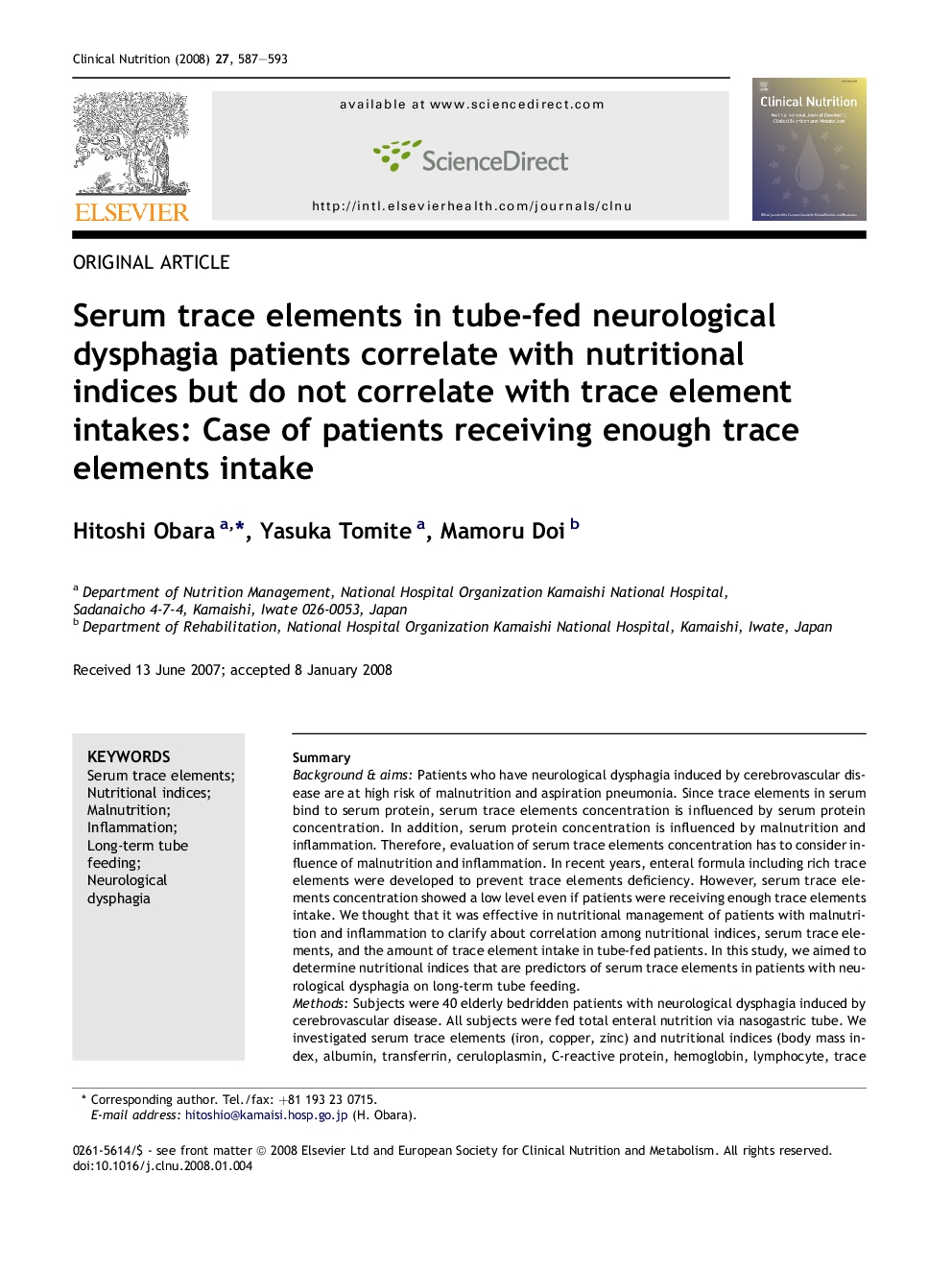| Article ID | Journal | Published Year | Pages | File Type |
|---|---|---|---|---|
| 2687599 | Clinical Nutrition | 2008 | 7 Pages |
SummaryBackground & aimsPatients who have neurological dysphagia induced by cerebrovascular disease are at high risk of malnutrition and aspiration pneumonia. Since trace elements in serum bind to serum protein, serum trace elements concentration is influenced by serum protein concentration. In addition, serum protein concentration is influenced by malnutrition and inflammation. Therefore, evaluation of serum trace elements concentration has to consider influence of malnutrition and inflammation. In recent years, enteral formula including rich trace elements were developed to prevent trace elements deficiency. However, serum trace elements concentration showed a low level even if patients were receiving enough trace elements intake. We thought that it was effective in nutritional management of patients with malnutrition and inflammation to clarify about correlation among nutritional indices, serum trace elements, and the amount of trace element intake in tube-fed patients. In this study, we aimed to determine nutritional indices that are predictors of serum trace elements in patients with neurological dysphagia on long-term tube feeding.MethodsSubjects were 40 elderly bedridden patients with neurological dysphagia induced by cerebrovascular disease. All subjects were fed total enteral nutrition via nasogastric tube. We investigated serum trace elements (iron, copper, zinc) and nutritional indices (body mass index, albumin, transferrin, ceruloplasmin, C-reactive protein, hemoglobin, lymphocyte, trace elements intake), and analyzed by multiple regression analysis. In addition, we divided subjects into two groups based on inflammatory response. The first group was 20 patients with inflammation (inflammation group), and another group was 20 patients without pneumonia (control group).ResultsSubjects were malnourished and showed inflammatory response: low body weight (55%), hypoalbuminemia (58%), moderate or severe inflammation (53%), anemia (38%). Ratio of low serum iron concentration was 43%. Ratio of high serum copper concentration was 45%. Ratio of low serum zinc concentration was 65%. Mean of trace elements intake was slightly more than requirements. In multiple regression analysis in all subjects, predictor of serum iron was hemoglobin (P < 0.01) and transferrin (P < 0.05), predictor of serum copper was ceruloplasmin (P < 0.001) and C-reactive protein (P < 0.05), predictor of serum zinc was albumin (P < 0.05). In comparisons of nutritional status between inflammation group and control group, serum zinc concentration in inflammation group was significantly lower than control group. On the other hand, ceruloplasmin, C-reactive protein and serum copper concentration in inflammation group were significantly higher than control group. There was no significant difference in daily trace elements intake between inflammation group and control group.ConclusionIn tube-fed patients with neurological dysphagia, serum trace elements concentration was influenced by malnutrition and inflammation. It was suggested that serum trace elements concentration might not be normalized if malnutrition and inflammation are not treated. We recommend periodical monitoring of trace elements for long-term tube-fed patients with neurological dysphagia.
